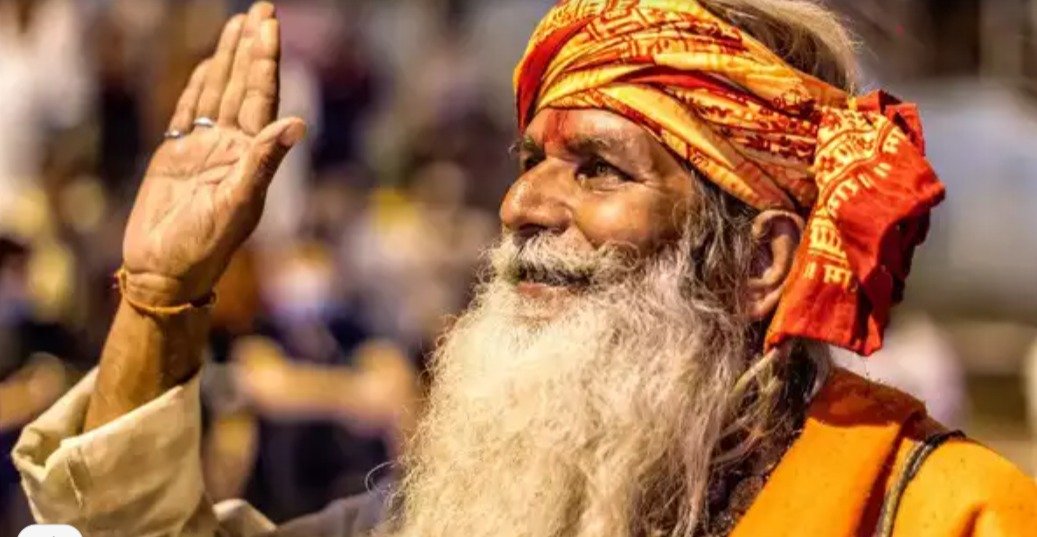Akharas, also known as Akhadas, are ancient monastic and martial institutions in India that play a crucial role in preserving the country’s spiritual, religious, and martial traditions. These institutions, primarily associated with Hinduism, have existed for centuries and continue to exert a profound influence on religious and cultural life.
Origins of Akharas
The origins of Akharas can be traced back to Adi Shankaracharya in the 8th century CE. He is credited with establishing four major mathas (monastic centers) in different parts of India to revive and unify Sanatan Dharma (Hinduism). Alongside these mathas, he is believed to have institutionalized Dashanami Sannyasis (a sect of ascetics) and organized them into different Akharas to protect the Hindu faith from external threats, especially during periods of invasions.
The concept of Akharas, however, has roots even earlier, as similar institutions existed in ancient times where sages and warriors would train in spiritual, philosophical, and martial disciplines. Some historians believe that Akharas were inspired by gurukuls (ancient learning centers) and the tradition of Kshatriya warrior saints.
Age of Akharas
If we consider the formation of Akharas around the 8th century CE, they have been in existence for over 1,200 years. However, their traditions and influence date back even further, making them one of the oldest organized religious institutions in India.
Major Akharas in India
Today, Akharas are primarily associated with Hindu ascetic sects, including Shaivism, Vaishnavism, and Udasin traditions. The major Akharas in India are divided into three main categories:
1. Shaiva Akharas (Followers of Lord Shiva)
- Juna Akhara (Largest and most influential)
- Mahanirvani Akhara
- Atal Akhara
- Avahan Akhara
- Anand Akhara
- Agni Akhara
2. Vaishnav Akharas (Followers of Lord Vishnu)
- Nirvani Ani Akhara
- Nirmohi Ani Akhara
- Digambar Ani Akhara
3. Udasin and Nirmal Akharas
- Udasin Akhara (Follows the teachings of Guru Nanak and is closely related to Sikh traditions)
- Nirmal Akhara (Prominent in North India, known for their scholarly traditions)
Appointment of the Shankaracharya
The appointment of Shankaracharya is a highly revered and structured process. The four main Shankaracharyas (leaders of monastic orders) oversee the four cardinal mathas (spiritual centers) established by Adi Shankaracharya:
- Jyotir Math (North) – Uttarakhand
- Govardhan Math (East) – Puri, Odisha
- Dwarka Math (West) – Gujarat
- Sringeri Math (South) – Karnataka
Selection Process
- The successor to the Shankaracharya is traditionally chosen from the senior-most monks of the respective matha.
- The selection is based on spiritual knowledge, ascetic discipline, and adherence to Vedic traditions.
- Once chosen, the successor undergoes an initiation ceremony and is officially anointed as the new Shankaracharya.
Although Akharas and the four mathas are separate institutions, they share a close relationship in promoting and preserving Hindu traditions.
Other Key Positions in Akharas
Each Akhara has a hierarchical system that includes several key positions:
1. Acharya Mahamandaleshwar
- The highest-ranking leader within an Akhara.
- Responsible for spiritual guidance, administration, and religious practices.
2. Mahamandaleshwar
- Senior ascetics who oversee different branches or centers of an Akhara.
- They play a vital role in organizing events like the Kumbh Mela, where Akharas showcase their strength and influence.
3. Mandaleshwar
- Heads of smaller monasteries or ashrams affiliated with the Akhara.
- They serve as spiritual teachers and guides for disciples.
4. Mahant
- Leaders of individual monasteries or temples under an Akhara’s jurisdiction.
- They manage day-to-day religious activities and disciple training.
5. Naga Sadhus
- Warrior ascetics who practice severe austerities and are often seen at Kumbh Mela.
- They live in seclusion, away from materialistic society, and focus on meditation and spiritual disciplines.
Recent Developments in Akharas
1. Growing Influence in Politics and Society
- In recent years, Akharas have become more active in Indian politics and social issues. Many Mahamandaleshwars and Akhara leaders have openly supported Hindu nationalist movements and have played key roles in discussions on issues like the Ram Mandir in Ayodhya.
- Some Akharas have also spoken out on contemporary socio-religious issues, such as cow protection, religious conversions, and temple administration reforms.
2. Recognition of Kinnar Akhara (Transgender Akhara)
- In 2019, the Kinnar Akhara, an Akhara for transgender saints, gained official recognition and was allowed to participate in the Kumbh Mela procession.
- This marked a historic moment in India’s religious landscape, bringing inclusivity to the traditional Akhara system.
3. Digital and Social Media Presence
- Many Akharas have started engaging with followers through social media platforms, online discourses, and YouTube channels.
- This shift towards digital engagement has helped them connect with the younger generation and spread their teachings more widely.
4. Modernization of Training and Facilities
- Some Akharas have introduced modern facilities in their ashrams and training centers, such as yoga centers, meditation retreats, and Sanskrit learning programs.
- They are also collaborating with universities and scholars to promote Hindu philosophy, Ayurveda, and ancient Indian sciences.
5. Disputes and Power Struggles
- There have been internal disputes within some Akharas over leadership and property management.
- Certain Akharas have faced conflicts over the appointment of Mahamandaleshwars and succession disputes, leading to legal battles.
6. Increasing Role in Environmental and Social Welfare Activities
- Akharas have taken up environmental conservation projects, such as planting trees, cleaning riverbanks, and promoting sustainable living.
- Some Akharas are actively involved in running educational institutions, hospitals, and charity kitchens for the underprivileged.
Conclusion
Akharas are an integral part of India’s spiritual and cultural heritage, having survived for over a millennium. Their traditions continue to inspire millions of devotees and seekers of spiritual wisdom. Despite modern challenges, they remain guardians of Sanatan Dharma, ensuring the continuity of India’s age-old traditions.
With their growing influence in politics, social issues, and digital platforms, Akharas are adapting to modern times while preserving their ancient traditions. Their role in the Kumbh Mela, Hindu religious movements, and social initiatives ensures that they remain relevant in contemporary India.
- Adi Shankaracharya
- Akhara hierarchy
- Akharas in India
- ancient Akharas
- Hindu Akharas
- Hindu ascetics
- Hindu monastic traditions
- Indian spirituality
- Kinnar Akhara
- Kumbh Mela
- Mahamandaleshwar
- Mahant
- Mandaleshwar
- modern Akharas
- Naga Sadhus
- recent developments in Akharas
- Shaiva Akharas
- Shankaracharya appointment
- Udasin Akharas
- Vaishnav Akharas

















Leave a comment